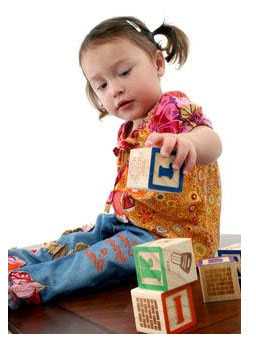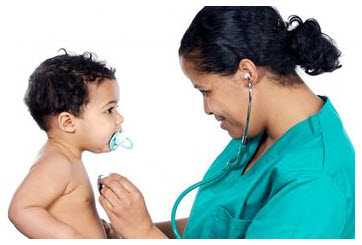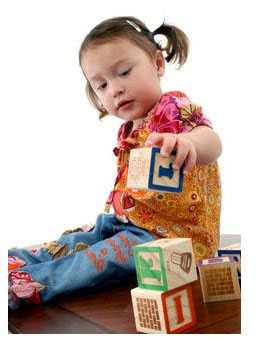Facts About ASD
 Autism spectrum disorder (ASD) is a developmental disability that can cause significant social, communication and behavioral challenges. There is often nothing about how people with ASD look that sets them apart from other people, but people with ASD may communicate, interact, behave, and learn in ways that are different from most other people. The learning, thinking, and problem-solving abilities of people with ASD can range from gifted to severely challenged. Some people with ASD need a lot of help in their daily lives; others need less.
Autism spectrum disorder (ASD) is a developmental disability that can cause significant social, communication and behavioral challenges. There is often nothing about how people with ASD look that sets them apart from other people, but people with ASD may communicate, interact, behave, and learn in ways that are different from most other people. The learning, thinking, and problem-solving abilities of people with ASD can range from gifted to severely challenged. Some people with ASD need a lot of help in their daily lives; others need less.
A diagnosis of ASD now includes several conditions that used to be diagnosed separately: autistic disorder, pervasive developmental disorder not otherwise specified (PDD-NOS), and Asperger syndrome. These conditions are now all called autism spectrum disorder.
Signs and Symptoms
People with ASD often have problems with social, emotional, and communication skills. They might repeat certain behaviors and might not want change in their daily activities. Many people with ASD also have different ways of learning, paying attention, or reacting to things. Signs of ASD begin during early childhood and typically last throughout a person’s life.
Children or adults with ASD might:
- not point at objects to show interest (for example, not point at an airplane flying over)
- not look at objects when another person points at them
- have trouble relating to others or not have an interest in other people at all
- avoid eye contact and want to be alone
- have trouble understanding other people’s feelings or talking about their own feelings
- prefer not to be held or cuddled, or might cuddle only when they want to
- appear to be unaware when people talk to them, but respond to other sounds
- be very interested in people, but not know how to talk, play, or relate to them
- repeat or echo words or phrases said to them, or repeat words or phrases in place of normal language
- have trouble expressing their needs using typical words or motions
- not play “pretend” games (for example, not pretend to “feed” a doll)
- repeat actions over and over again
- have trouble adapting when a routine changes
- have unusual reactions to the way things smell, taste, look, feel, or sound
- lose skills they once had (for example, stop saying words they were using)
Learn about developmental milestones that young children should reach »

Diagnosis
Diagnosing ASD can be difficult since there is no medical test, like a blood test, to diagnose the disorders. Doctors look at the child’s behavior and development to make a diagnosis.
ASD can sometimes be detected at 18 months or younger. By age 2, a diagnosis by an experienced professional can be considered very reliable.1 However, many children do not receive a final diagnosis until much older. This delay means that children with ASD might not get the early help they need.
Treatment
There is currently no cure for ASD. However, research shows that early intervention treatment services can improve a child’s development.2, 3 Early intervention services help children from birth to 3 years old (36 months) learn important skills. Services can include therapy to help the child talk, walk, and interact with others. Therefore, it is important to talk to your child’s doctor as soon as possible if you think your child has ASD or other developmental problem.
Even if your child has not been diagnosed with an ASD, he or she may be eligible for early intervention treatment services. The Individuals with Disabilities Education Act (IDEA) says that children under the age of 3 years (36 months) who are at risk of having developmental delays may be eligible for services. These services are provided through an early intervention system in your state. Through this system, you can ask for an evaluation.
In addition, treatment for particular symptoms, such as speech therapy for language delays, often does not need to wait for a formal ASD diagnosis.
Learn about types of treatments »
Causes and Risk Factors
We do not know all of the causes of ASD. However, we have learned that there are likely many causes for multiple types of ASD. There may be many different factors that make a child more likely to have an ASD, including environmental, biologic and genetic factors.
- Most scientists agree that genes are one of the risk factors that can make a person more likely to develop ASD.4
- Children who have a sibling with ASD are at a higher risk of also having ASD. 5-10
- ASD tends to occur more often in people who have certain genetic or chromosomal conditions, such as fragile X syndrome or tuberous sclerosis.11-14
- When taken during pregnancy, the prescription drugs valproic acid and thalidomide have been linked with a higher risk of ASD.15-16
- There is some evidence that the critical period for developing ASD occurs before, during, and immediately after birth. 17
- Children born to older parents are at greater risk for having ASD.18
ASD continues to be an important public health concern. Like the many families living with ASD, CDC wants to find out what causes the disorder. Understanding the factors that make a person more likely to develop ASD will help us learn more about the causes. We are currently working on one of the largest U.S. studies to date, called Study to Explore Early Development (SEED). SEED is looking at many possible risk factors for ASD, including genetic, environmental, pregnancy, and behavioral factors.
Learn more about CDC’s research on possible causes and risk factors for ASD »
Who is Affected
ASD occurs in all racial, ethnic, and socioeconomic groups, but is about 4.5 times more common among boys than among girls.
For over a decade, CDC’s Autism and Developmental Disabilities Monitoring (ADDM) Network has been estimating the number of children with ASD in the United States. We have learned a lot about how many U. S. children have ASD. It will be important to use the same methods to track how the number of children with ASD is changing over time in order to learn more about the disorder.
Learn more about CDC’s tracking of the number of children with ASD »
If You’re Concerned
If you think your child might have ASD or you think there could be a problem with the way your child plays, learns, speaks, or acts, contact your child’s doctor, and share your concerns.
If you or the doctor is still concerned, ask the doctor for a referral to a specialist who can do a more in-depth evaluation of your child. Specialists who can do a more in-depth evaluation and make a diagnosis include:
- Developmental Pediatricians (doctors who have special training in child development and children with special needs)
- Child Neurologists (doctors who work on the brain, spine, and nerves)
- Child Psychologists or Psychiatrists (doctors who know about the human mind)
At the same time, call your state’s public early childhood system to request a free evaluation to find out if your child qualifies for intervention services. This is sometimes called a Child Find evaluation. You do not need to wait for a doctor’s referral or a medical diagnosis to make this call.
Where to call for a free evaluation from the state depends on your child’s age:
- If your child is not yet 3 years old, contact your local early intervention system.
- You can find the right contact information for your state by calling the Early Childhood Technical Assistance Center (ECTA) at 919-962-2001.
- Or visit the ECTA website.
- If your child is 3 years old or older, contact your local public school system.
- Even if your child is not yet old enough for kindergarten or enrolled in a public school, call your local elementary school or board of education and ask to speak with someone who can help you have your child evaluated.
- If you’re not sure who to contact, call the Early Childhood Technical Assistance Center (ECTA) at 919-962-2001.
- Or visit the ECTA website.
Research shows that early intervention services can greatly improve a child’s development.2, 3 In order to make sure your child reaches his or her full potential, it is very important to get help for an ASD as soon as possible.
References
- Lord C, Risi S, DiLavore PS, Shulman C, Thurm A, Pickles A. Autism from 2 to 9 years of age. Arch Gen Psychiatry. 2006 Jun;63(6):694-701.
- Handleman, J.S., Harris, S., eds. Preschool Education Programs for Children with Autism (2nd ed). Austin, TX: Pro-Ed. 2000.
- National Research Council. Educating Children with Autism. Washington, DC: National Academy Press, 2001.
- Huquet G, Ey E, Bourgeron T. The genetic landscapes of autism spectrum disorders. Annu Re Genomics Hum Genet. 2013; 14: 191-213.
- Rosenberg RE, Law JK, Yenokyan G, McGready J, Kaufmann WE, Law PA. Characterisitics and concordance of autism spectrum disorders among 277 twin pairs. Arch Pediatr Adolesc Med. 2009; 163(10): 907-914.
- Hallmayer J, Cleveland S, Torres A, Phillips J, Cohen B, Torigoe T, Miller J, Fedele A, Collins J, Smith K, Lotspeich L, Croen LA, Ozonoff S, Lajonchere C, Grether JK, Risch N. Genetic heritability and shared environmental factors among twin pairs with autism. Arch Gen Psychiatry. 2011; 68(11): 1095-1102.
- Ronald A, Happe F, Bolton P, Butcher LM, Price TS, Wheelwright S, Baron-Cohen S, Plomin R. Genetic heterogeneity between the three components of the autism spectrum: A twin study. J. Am. Acad. Child Adolesc. Psychiatry. 2006; 45(6): 691-699.
- Taniai H, Nishiyama T, Miyahci T, Imaeda M, Sumi S. Genetic influences on the board spectrum of autism: Study of proband-ascertained twins. Am J Med Genet B Neuropsychiatr Genet. 2008; 147B(6): 844-849.
- Ozonoff S, Young GS, Carter A, Messinger D, Yirmiya N, Zwaigenbaum L, Bryson S, Carver LJ, Constantino JN, Dobkins K, Hutman T, Iverson JM, Landa R, Rogers SJ, Sigman M, Stone WL. Recurrence risk for autism spectrum disorders: A Baby Siblings Research Consortium study. Pediatrics. 2011; 128: e488-e495.
- Sumi S, Taniai H, Miyachi T, Tanemura M. Sibling risk of pervasive developmental disorder estimated by means of an epidemiologic survey in Nagoya, Japan. J Hum Genet. 2006; 51: 518-522.
- DiGuiseppi C, Hepburn S, Davis JM, Fidler DJ, Hartway S, Lee NR, Miller L, Ruttenber M, Robinson C. Screening for autism spectrum disorders in children with Down syndrome. J Dev Behav Pediatr. 2010; 31: 181-191.
- Cohen D, Pichard N, Tordjman S, Baumann C, Burglen L, Excoffier E, Lazar G, Mazet P, Pinquier C, Verloes A, Heron D. Specific genetic disorders and autism: Clinical contribution towards their identification. J Autism Dev Disord. 2005; 35(1): 103-116.
- Hall SS, Lightbody AA, Reiss AL. Compulsive, self-injurious, and autistic behavior in children and adolescents with fragile X syndrome. Am J Ment Retard. 2008; 113(1): 44-53.
- Zecavati N, Spence SJ. Neurometabolic disorders and dysfunction in autism spectrum disorders. Curr Neurol Neurosci Rep. 2009; 9(2): 129-136.
- Christensen J, Grønborg TK, Sørensen MJ, Schendel D, Parner ET, Pedersen LH, Vestergaard M. Prenatal valproate exposure and risk of autism spectrum disorders and childhood autism. JAMA. 2013; 309(16): 1696-1703.
- Strömland K, Nordin V, Miller M, Akerström B, Gillberg C. Autism in thalidomide embryopathy: a population study. Dev Med Child Neurol. 1994; 36(4): 351-356.
- Gardener H, Spiegelman D, Buka SL. Perinatal and neonatal risk factors for autism: a comprehensive meta-analysis. Pediatrics. 2011; 128(2): 344-355.
- Durkin MS, Maenner MJ, Newschaffer CJ, Lee LC, Cunniff CM, Daniels JL, Kirby RS, Leavitt L, Miller L, Zahorodny W, Schieve LA. Advanced parental age and the risk of autism spectrum disorder. Am J Epidemiol. 2008; 168(11): 1268-1276.
E-mail Your Friends
"Children with autism spectrum disorder are not being diagnosed as early as they could be. Learn the signs of autism and get help if you’re concerned."
Share on Facebook

“Many children with autism spectrum disorder (ASD) are not being identified as early as they could be. Early identification is the most powerful tool we have right now to make a difference in the lives of children with ASD.”
Share on Twitter
“Too many children w/ autism are not being identified as early as they could be. Earlier is better. #ActEarly”
- Page last reviewed: March 10, 2017
- Page last updated: March 28, 2016
- Content source:


 ShareCompartir
ShareCompartir